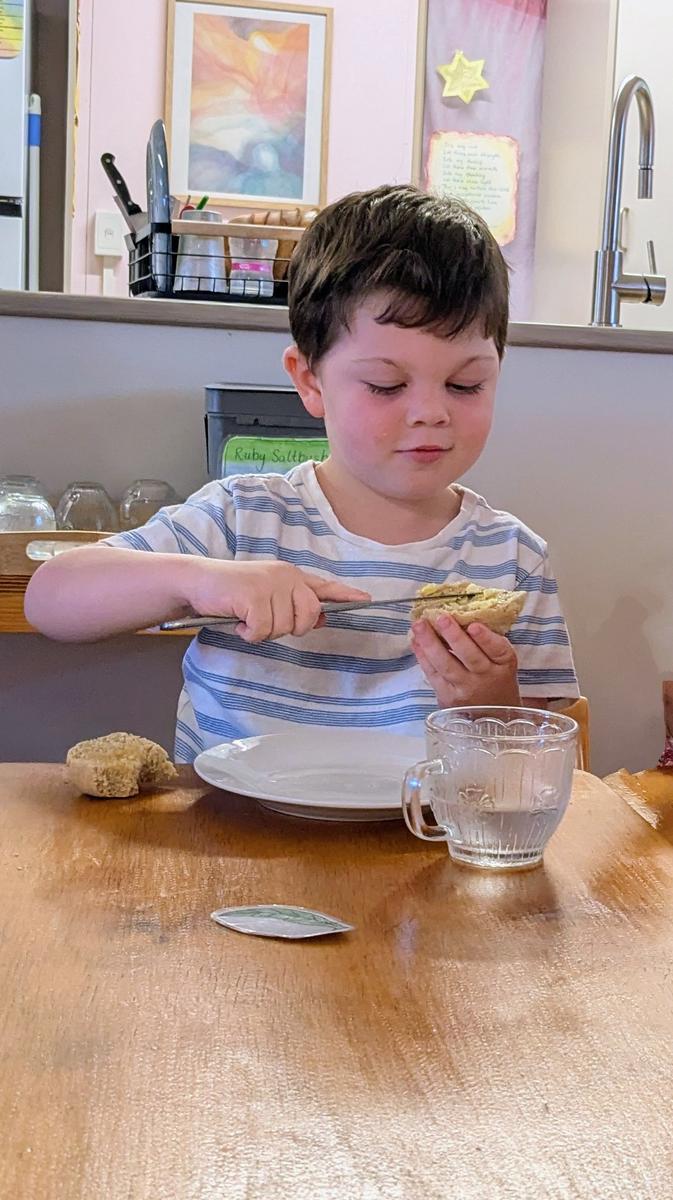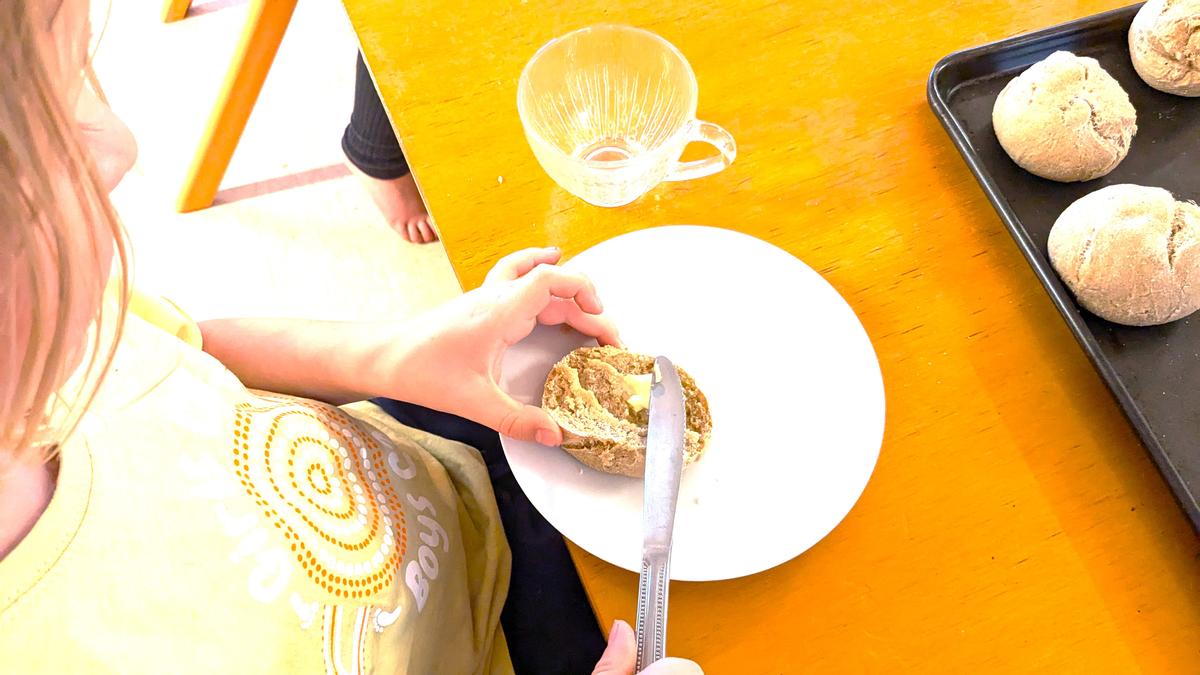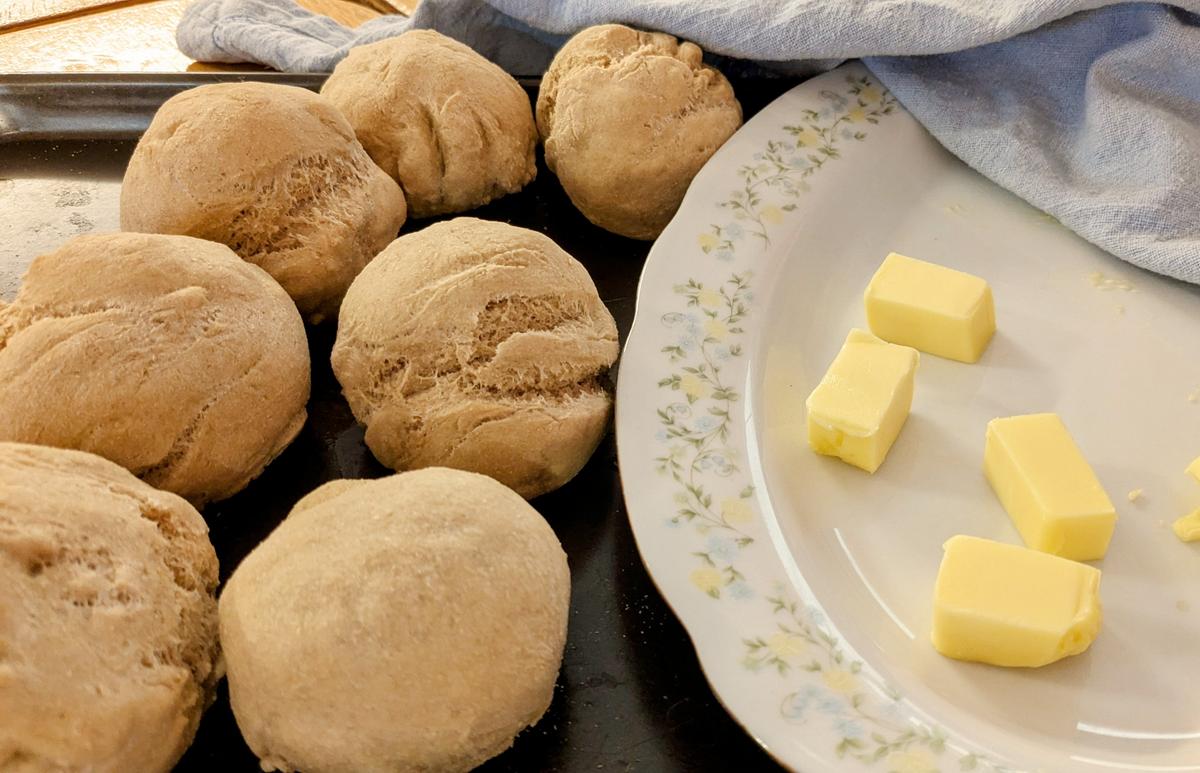Ruby Saltbush
DIERDRE AILA

Ruby Saltbush
DIERDRE AILA
We know young children learn best through play, and bread making is a sensory-rich activity that brings textures, smells and tastes all together. This organic experience in one that has the ability to engage, entice and ignite a sense of wonder in young children. Through the whole experience of kneading, baking, waiting, and eating the children are learning to slow the pace of their day and are becoming an interconnected part of a community.
Steiner Education meets the learning needs of the young child today through a play-based whole-child approach. It does this through an integrated and rich curriculum filled with guided learning and structured free play.
In a Steiner early childhood classroom, language and literacy is nurtured through meaningful experiences of storytelling, singing, poetry and verse. Math and science skills are developed through creative and purposeful work activities such as bread making and cooking, block building and woodworking, as well as the care for the environment. Love for nature and respect for the environment are brought through gardening and composting, nature crafts, outdoor play, and the seasonal celebration of festivals. Artistic expression is encouraged by daily creative activities such as watercolour painting, drawing, modelling, music and movement, craft and handwork. Most importantly, the young child learns through active engagement of their whole self in imaginative social structured free play.
A living example of this purposeful play is in the weekly activity of bread making.
What are the children doing when they bake bread in Early Childhood?
They are:
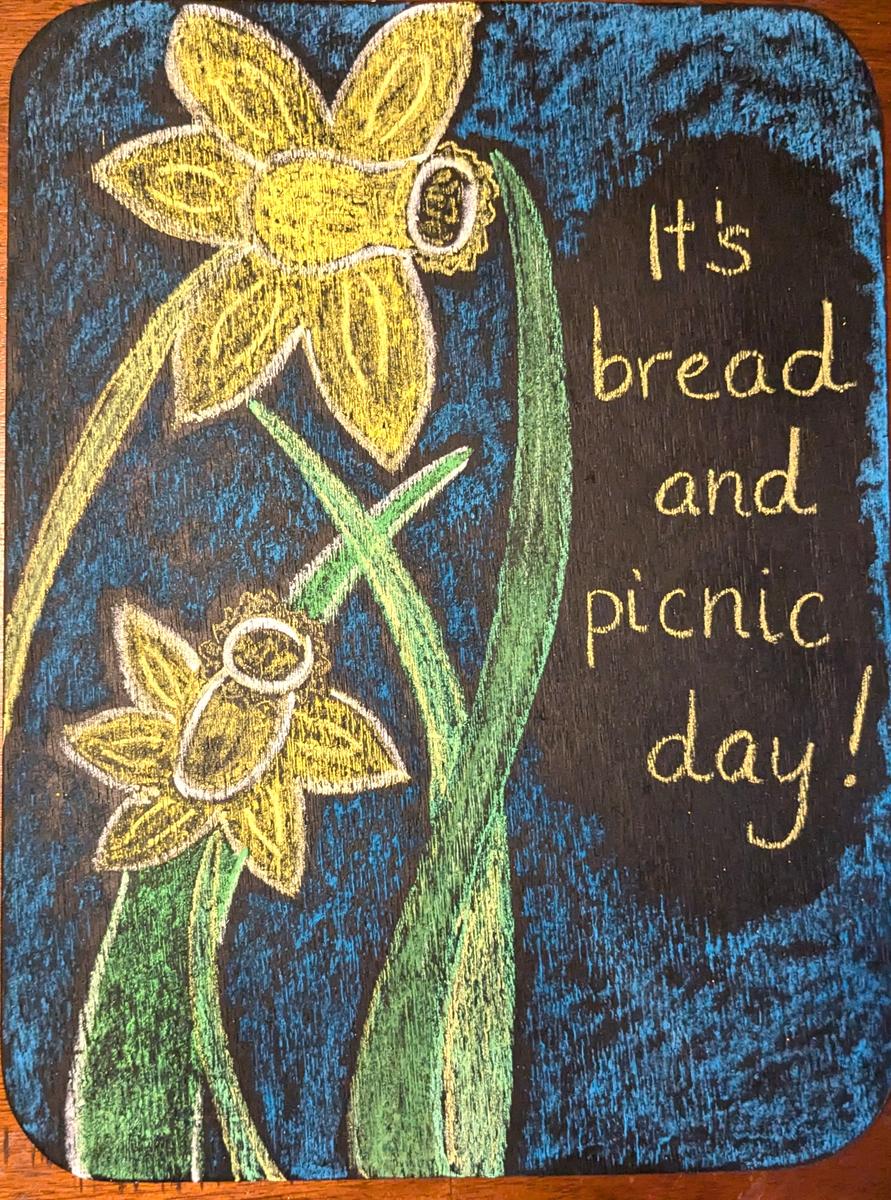

Our weekly bread routine in RSB:
The table has been sprinkled with flour. Children who have already washed hands are making patterns, shapes and pictures with the flour as they await their friends. Once the teacher brings the dough to the table, large lumps of dough are divided, a portion for each child. Then they all begin singing the well-known song:
“This is the way we knead the dough, knead the dough, knead the dough,
This is the way we knead the dough, on a lovely Ruby Saltbush day!”
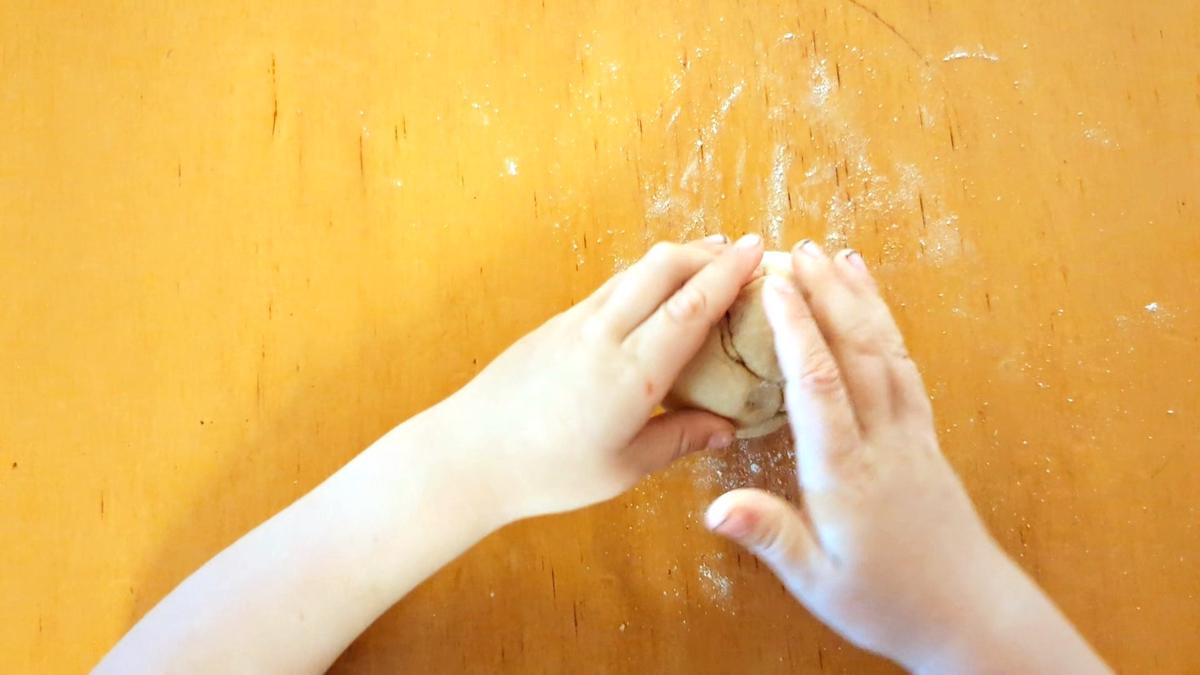
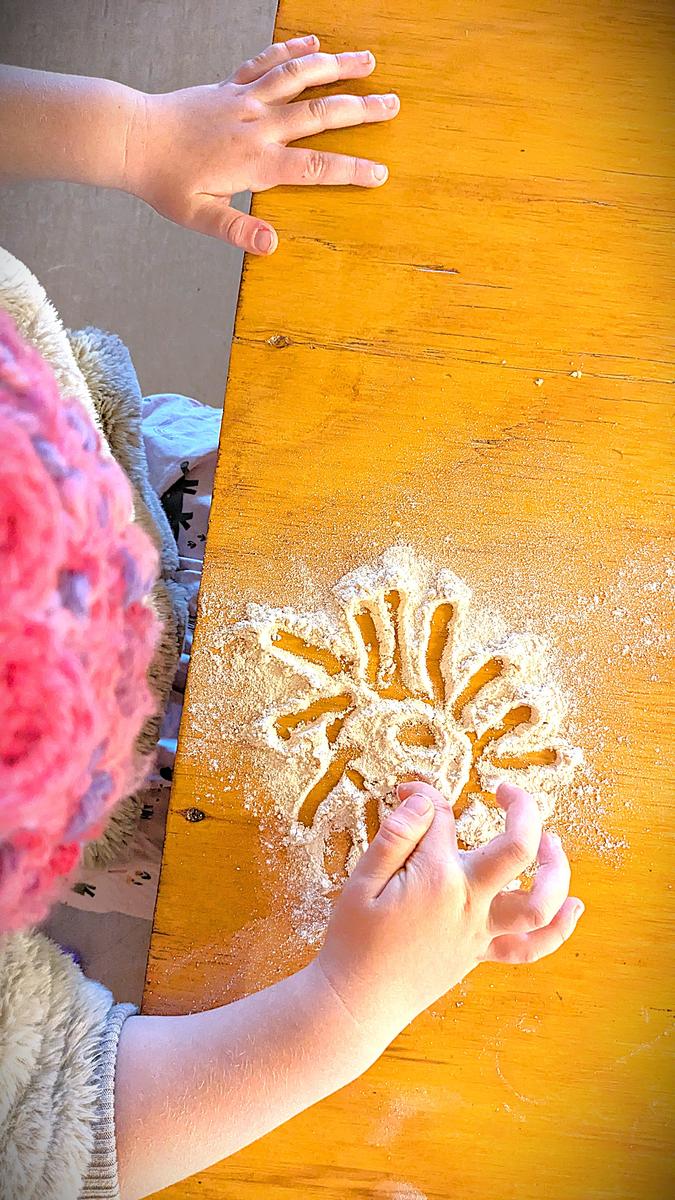




Rigorously kneading the dough, some children discover that their hands are too sticky and they need more flour. The sifter is taken out and a gentle flour sprinkles over the dough. Rounds of “this is the way we push the dough”… and “this is the way we roll the dough”… “on a lovely Ruby Saltbush day” continue to be sung and children are laughing and chatting as they squeeze, push and roll the dough. Then, as the teacher sings:
“Kneading and rolling, making and baking,
so we will have lovely round buns”

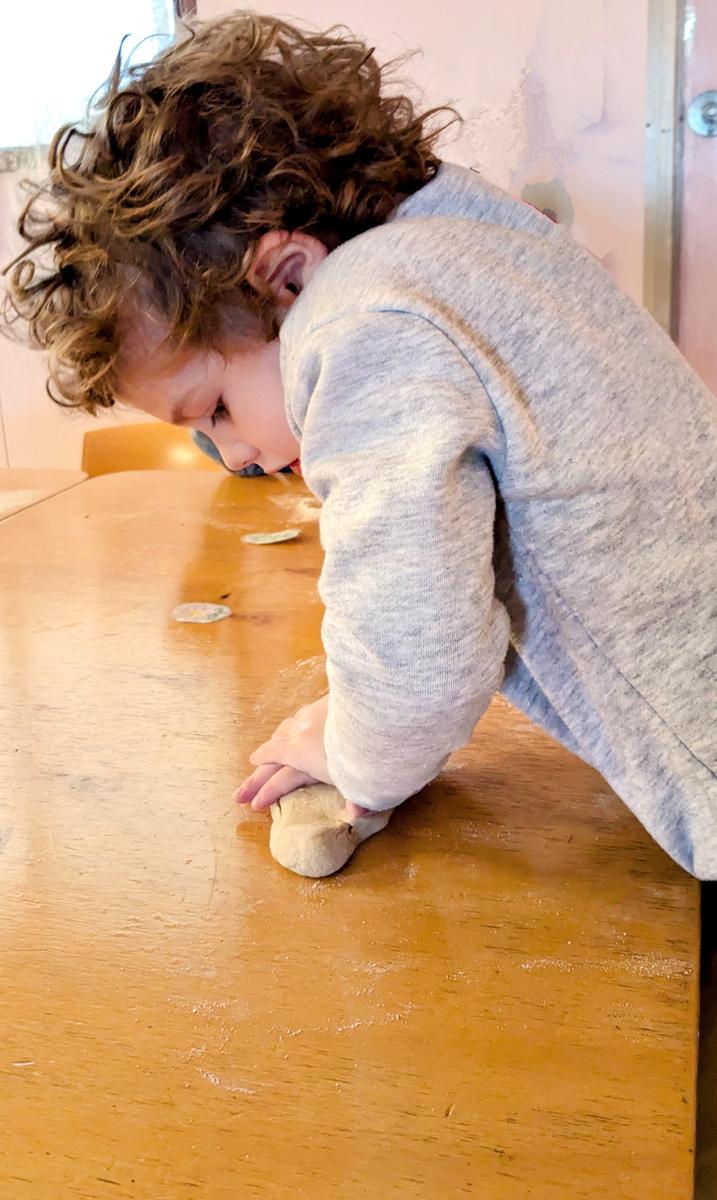


The organic wholewheat dough now gets transformed into a lovely round bun and each one is carefully placed on the baking sheet to grow before it is then baked, filling the classroom with its wonderful aroma.




The fun and messy process of cleaning the table, washing the mixing bowl and sweeping the floor begins. The children discover that many helpers make light the work and the job is complete in no time.
Later, after some indoor play, a few children will help to set the table with glasses, jugs of water, plates and butter knives. The buns, cutting boards and plates of butter are placed before the adults to cut and give to each child. Carefully and competently, each child spreads their butter before enjoying a wonderful warm bite of bread and butter.
Bliss!

